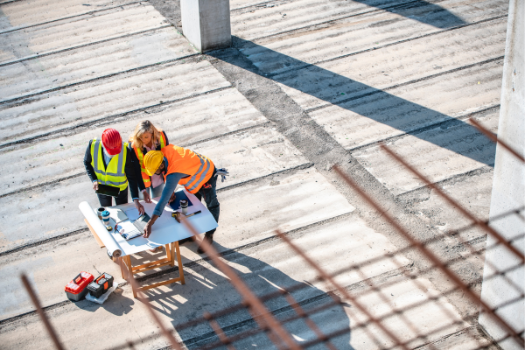.png)
How to Forecast Construction Budgets with Real-World Data
In construction, going over budget is more common than staying on track. It's not always because of bad planning—sometimes it’s just poor forecasting. Many teams still rely on rough estimates or outdated data. That can lead to costly surprises. The good news? You don’t have to guess anymore. With real-world data, you can forecast budgets more accurately. You’ll catch issues before they grow, and plan smarter from day one. This article will show you how to use actual data to make better budget calls, avoid overruns, and stay on course. It’s simpler than you think.

Understanding Construction Budget Forecasting
Budget forecasting means planning what a project will cost—before and during the work. It’s more than a one-time guess. It’s a process that helps you stay on top of changing prices, timelines, and scope. You use the data you have to make informed estimates about labor, materials, and equipment. Forecasting is not just for finance teams. It helps project managers, contractors, and even clients stay aligned. When you forecast well, you avoid nasty surprises like unexpected cost spikes or running out of funds. You also spot risks early. Think of it like a GPS for your budget. You check where you’re going, adjust the route as needed, and make sure you reach the end without running out of fuel. With the right tools and approach, anyone in construction can do it—and do it well.

The Role of Real-World Data in Forecasting
Real-world data is everything you’ve learned from past and current jobs. It’s the prices you’ve paid, the hours your crews worked, the delays you hit. All of it adds up to knowledge you can use. Instead of guessing, you look at what’s actually happened—then plan from there. For example, if you know material costs rose 8% last year, you can build that into your budget this year. If certain tasks always take longer, you can adjust your labor costs ahead of time.
You can also compare jobs by size, location, or season to see what really affects your costs. That’s powerful. It means your budgets stop being wishful thinking. They become grounded in truth. The more data you track, the better your forecasts get. And the more you update your data, the more real-time your insights become. That keeps your project budgets flexible and accurate—even when things change. Real data means real control.
Steps to Implement Data-Driven Budget Forecasting
Step 1: Collect the Right Data
Start with past projects. Pull cost breakdowns, timelines, vendor rates, and labor hours. The more detailed, the better.
Step 2: Analyze the Trends
Look for patterns. Are material prices going up? Do some tasks always take longer? What causes delays? This helps you plan ahead.
Step 3: Build a Forecast Model
Use your findings to build a working budget. Include labor, materials, equipment, and subcontractor costs. Add a buffer for risks.

Step 4: Keep Updating It
Budgets should breathe. As your project moves forward, update your forecast with new data—like actual spend vs. estimated costs. That’s how you stay accurate.
Step 5: Share with the Team
Make your forecast visible. Everyone—PMs, finance, field crews—should know where things stand. That helps people make smarter decisions on the fly.
Step 6: Review and Learn
After the project, compare the forecast to what really happened. What worked? What didn’t? This learning feeds the next forecast and makes it better.
Benefits of Data-Driven Forecasting
Better Accuracy
You stop guessing. Your numbers are based on real history, not hopes. That means fewer overruns and fewer surprises.
Smarter Risk Planning
With data, you can spot trouble early. Maybe it’s rising prices, maybe a long lead time. Either way, you’ll see it coming.
Improved Team Efficiency
Clear forecasts help teams stay focused. They know the budget, the plan, and the limits. That means fewer delays and better choices on site.
More Trust from Clients
When clients see you working with facts and updates, it builds trust. They feel confident their money is in good hands.
Better Profit Margins
When costs don’t spiral, profits stay intact. Simple as that.
Bidlight's Approach to Budget Forecasting

At Bidlight, we help you forecast with confidence. Our system uses your real-world data—like costs, timelines, and past projects—to build accurate forecasts. We make it easy to spot trends, predict risks, and adjust as things change. No spreadsheets. No guesswork. Just smart tools that show where you’re headed and help you stay on track. With Bidlight, you’re not just reacting to costs—you’re staying ahead of them. Whether it’s a small job or a multi-phase project, we help you plan better and deliver on budget.
Conclusion: Embracing Data for Financial Success
Forecasting doesn’t have to be hard. With the right data, you can see what’s coming and plan for it. That means fewer surprises and more control. At Bidlight, we believe real data creates real results. Ready to build smarter? Start forecasting with confidence today.